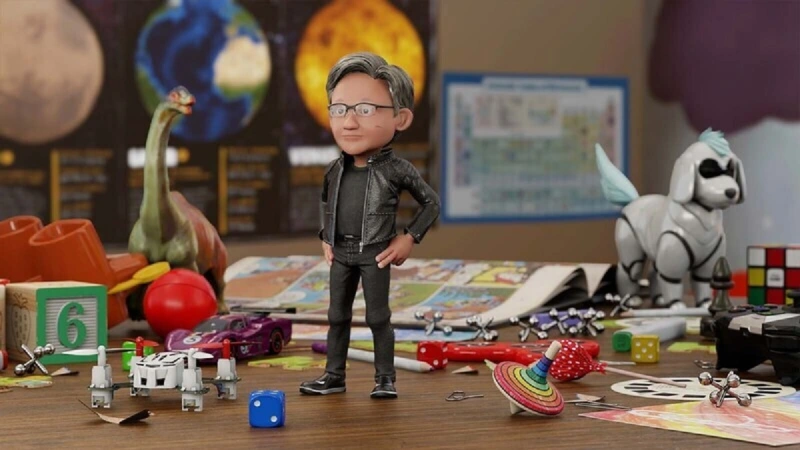That’s because the metaverse will not be about fun and games. Enterprises are using the open platform of the Omniverse as a way to conduct simulations in the digital world before they build something in the real world. Creating “digital twins” of things like BMW factories and even the climate model of the entire Earth are giving real meaning to the metaverse among enterprises and other non-game applications. For the third time at an Nvidia GTC event, I moderated a panel on the Omniverse and the progress that companies are making as they build 3D assets, simulate their engineering designs, and share across company lines. Our panel assessed how much progress we have made and what kind of progress they expect to make in one, five, or ten years.
The panelists included Rev Lebaredian, head of the Omniverse and simulation technology group at Nvidia; Virginie Maillard, global head of research for simulation and digital twins for Siemens; Amy Bunszel, executive vice president of architecture, engineering, and construction design solutions at Autodesk; Timoni West, vice president of augmented and virtual reality at Unity; and Lori Hufford, vice president of engineering collaboration at Bentley Systems.
What follows is an edited transcript of our panel.
VentureBeat: Let’s start by talking about your short view of the metaverse and your company’s place in it. Virginie, can you start us off again?
Maillard: For Siemens, the industrial metaverse has been here for a while in the form of our digital twins and digital threads. We’ve applied these in factories, transportation, buildings, smart cities. All along the full life cycle for design, production, and operation. Our industrial engineering software already provides key building blocks for the industrial metaverse, including the immersive user experiences with AR and VR capabilities. We can already provide that, for example, in Simcenter or Process Simulate.
In the future, we believe the industrial metaverse will expand, because of the availability and combination of multiple technology enablers together, offering more realistic immersion, real-time feedback, and more openness and interoperability between tools. We say that these new capabilities will allow our customers to extend their experience, improve interaction with the digital world, enable collaboration between different people in the digital world, and also combine physical and digital to more easily and quickly test for different scenarios in the real world. For Siemens, the industrial metaverse will be an evolution of what we already provide to enable better digital twins and digital.
Bunszel: One thing that excites me about the industrial metaverse is how it will take down barriers between collaboration and enable innovation, while also helping us operate all of our built assets more effectively. This includes all the way into renovation and decommission, which is going to be important for sustainability.
I feel like on the one hand, the industrial metaverse enables the creation of digital twins of places and processes and real-world objects, but I also want to talk about what we’re doing using the metaverse to provide rich context for new designs. If you think about how our customers can create a metaverse that helps them visualize, simulate, and analyze physical and functional performance before they ever build anything–this is good for buildings and infrastructure, and it will enable them to engage with stakeholders broadly across the entire world, helping them explore more ideas, from the crazy to the practical, before they ever begin to build anything.
Another great thing about the metaverse is it will enable our customers to bring together data from any vendor. The idea of the metaverse being inherently open and enabling our customers to aggregate data from anywhere. I think we all know that people use tools from multiple vendors. Pulling everything together can sometimes be a challenge.
As far as the role of AutoDesk, in case it’s not obvious, we’re not building the metaverse. Our solutions really contribute to the metaverse. We’re looking at ways we can help our customers unlock the value of the data they create in our solutions by enabling them to easily bring this data to the metaverse, to explore all that’s possible there.
West: My view is a bit different. I tend to think of the metaverse as a metaphor, in much the same way we talked about the information superhighway in the 90s. It’s less of a thing that will come to exist and more of a way to describe what I consider a much more fundamental and interesting shift, which is how computers have changed over the last decade. They went from being networked and portable, which is a big change we saw up to 2010, to now having a ton of miniaturized and high-fidelity sensors and machine learning. This gives us the ability to have computers that truly understand things like scanning a space, recognizing objects, recognizing faces, being able to recognize voices, and being able to recognize the input parts of a system.
Source: https://venturebeat.com/2022/03/22/nvidia-gtc-how-to-build-the-industrial-metaverse/
